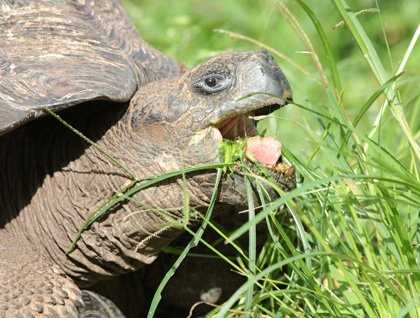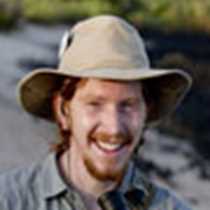It is a beautiful day; the sun is shining all around. We can see the entire profile of Santa Cruz Island as National Geographic Islander is anchored at Academy Bay on the southern slope of Santa Cruz. This island has the largest human settlement and is the economic capital of Galápagos.
Today, we visited Puerto Ayora; this is a vibrant village with hotels, restaurants, banks, and schools. Here we paid a visit to the Charles Darwin Research Station. This visit was a great opportunity to understand the natural history of the Galápagos giant tortoises and the human history as well.
A very interesting part of the visit was learning about the conservation programs carried out by the Galápagos National Park Service and the Charles Darwin Research Station. As we explored this area we could identify two types of tortoises: the saddleback and the dome shaped. These animals are very different and specialized to completely different ecosystems. Saddlebacks belong on dry dessert islands and dome-shaped tortoises are typically found on humid regions of the higher islands.
At mid-morning we still had some activities on the agenda. We boarded buses to explore the cloud forest of Santa Cruz. As we headed to the highlands we stopped to visit a local family that runs a small sugar and rum business. They have been doing this for decades along with the production of coffee. It was very interesting to learn about the lives of the local farmers and also to taste their produce.
Once in the highlands we explored the forest and grassland. The highlight in this area are the Galápagos giant tortoises. These large reptiles still dominate the cloud forest of Santa Cruz. In the 60s they used to number around 3,000. In the last decades they have made a great comeback due to conservation work. Today we can say there are more than 5,000 tortoises!









